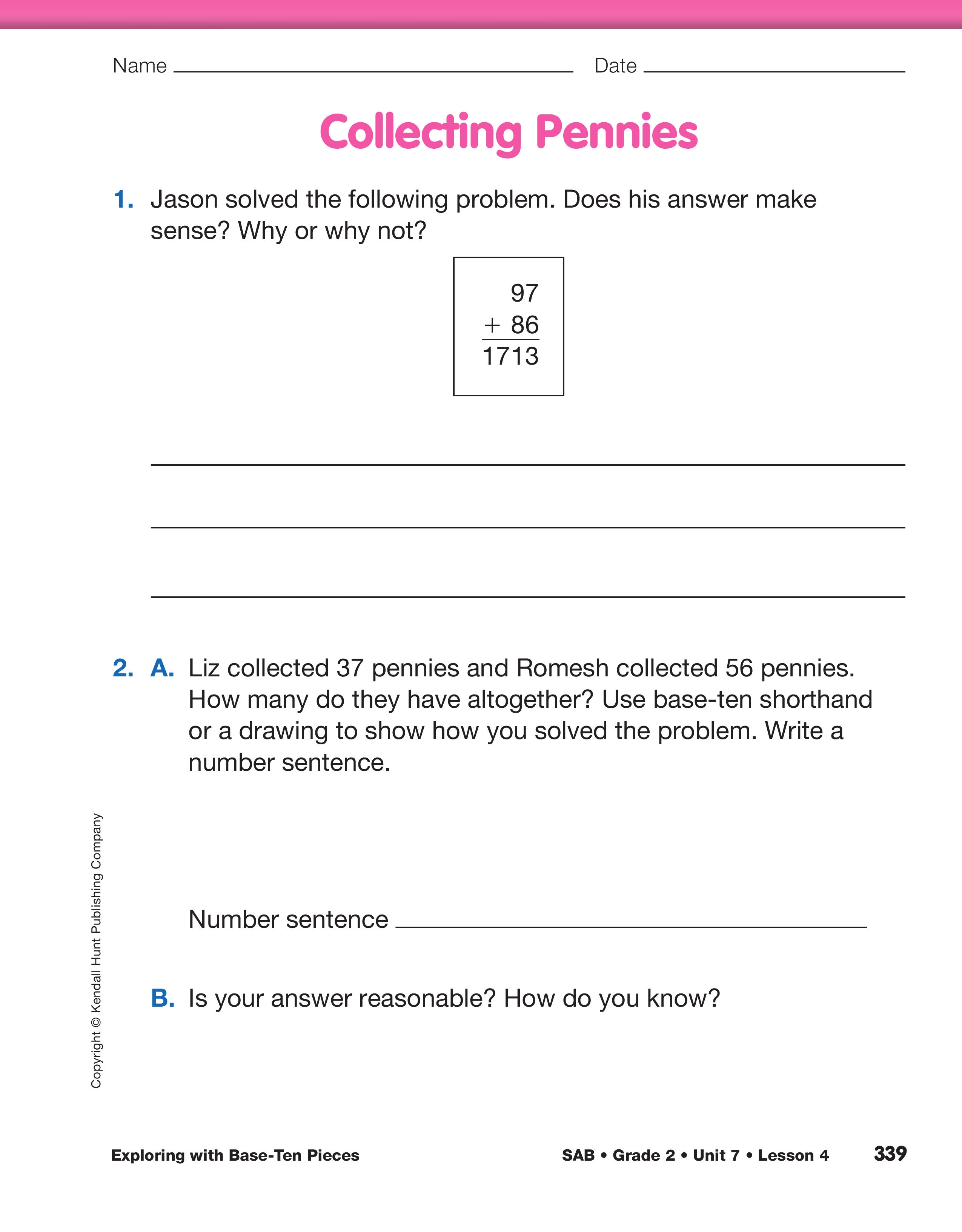Read the following problem to students:
Frank collected 84 pennies and Tara collected 36. How
many pennies do they have in all?
Explain to students that Mara and Peter solved the
problem. Mara’s answer was 1,110 pennies and
Peter’s answer was 120 pennies.
Have students estimate the answer and determine
which answer is correct. Then, have student pairs
use base-ten pieces to model the problem and use
base-ten shorthand to record their answers.
- Who had the correct solution: Mara or Peter?
(Peter)
- How did you use base-ten pieces to find the
answer?
- What advice would give Mara? (Possible response:
She added the bits and the skinnies but she didn’t
make any trades. She didn’t follow the Fewest
Pieces Rule.)
- How did you check your answer for reasonableness?
(We used friendly numbers: 84 is close to
80 and 36 is close to 40. 80 + 40 = 120. That’s
what Peter got for an answer.)
Assign the Collecting Pennies page in the Student
Activity Book to assess students’ abilities to use
base-ten pieces to solve addition problems with
trades.
Assign the Collecting Pennies page with the Feedback Box in
the Student Activity Book to assess students’ abilities to use
and apply place value concepts [E1]; to represent addition
problems using base-ten pieces and number sentences [E2];
add multidigit numbers using mental math strategies (e.g.,
composing and decomposing numbers) and using base-ten
pieces [E3]; check an answer for reasonableness [MPE3];
and show or tell how to solve problems [MPE5].














